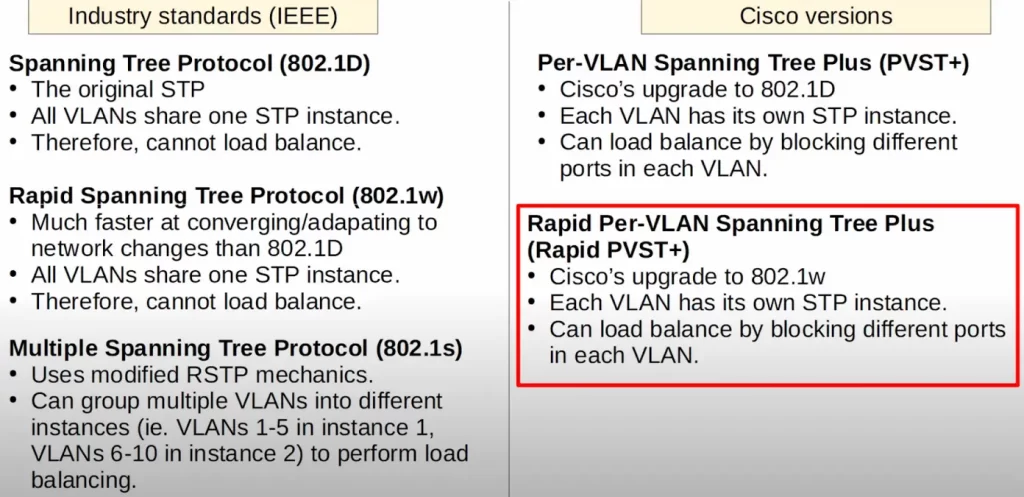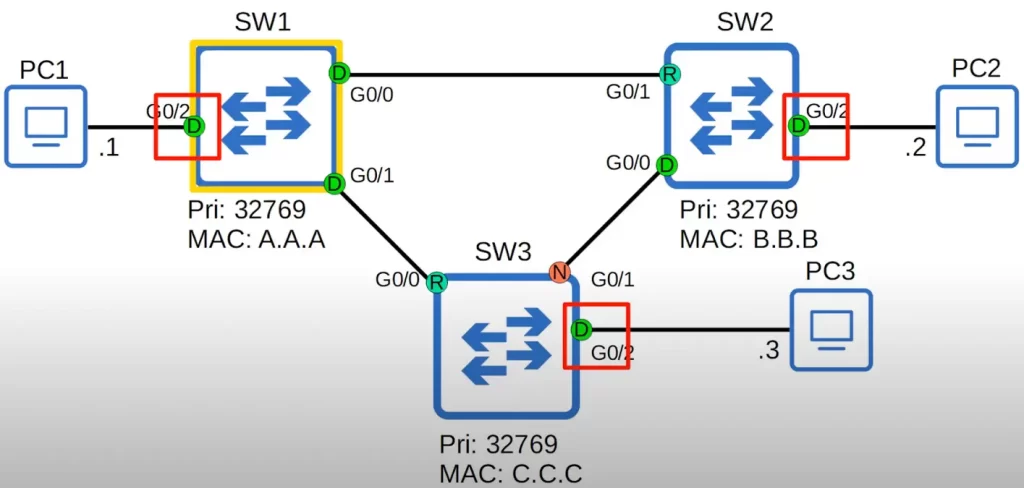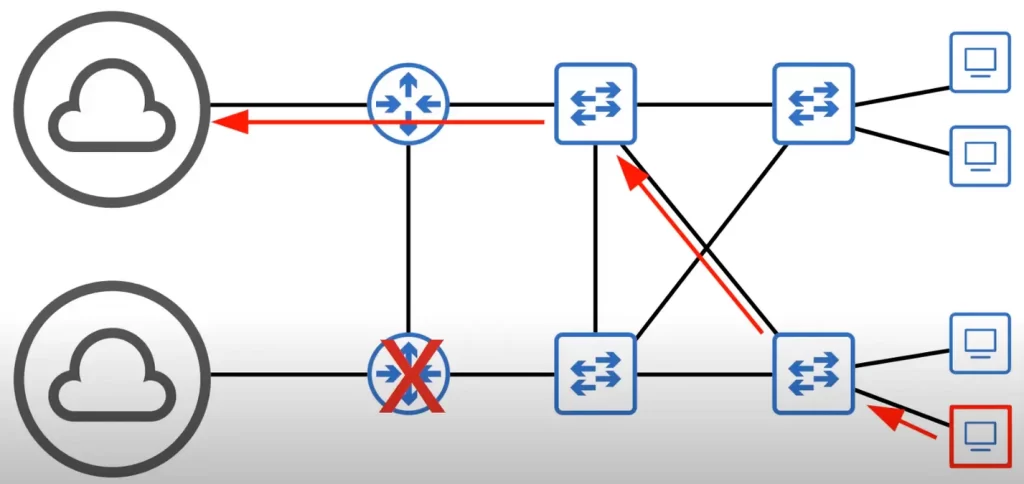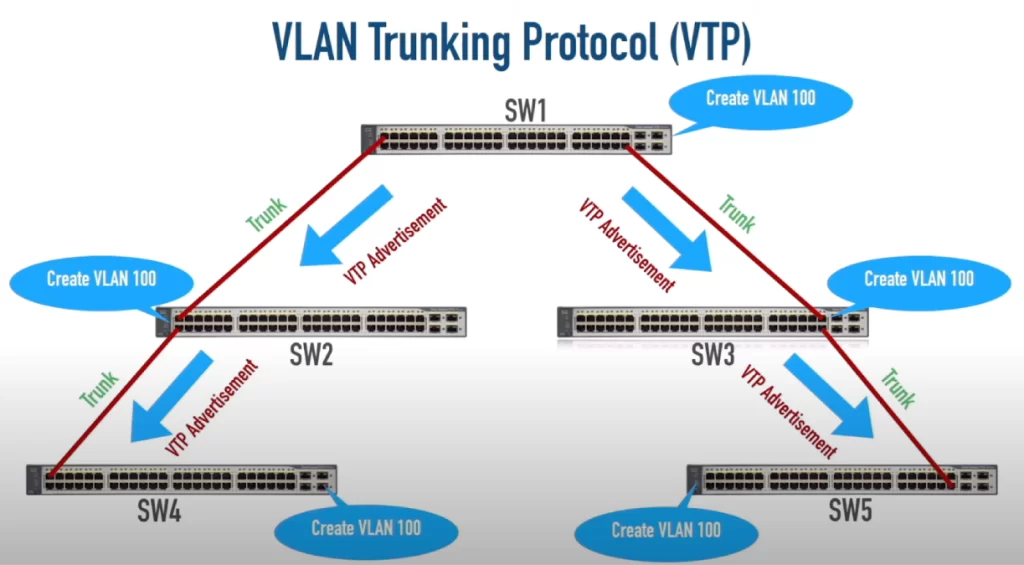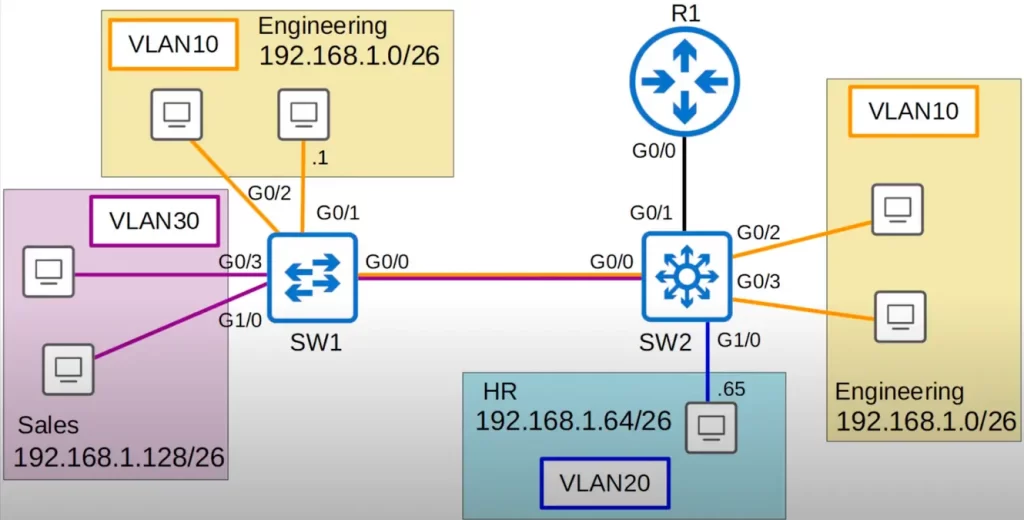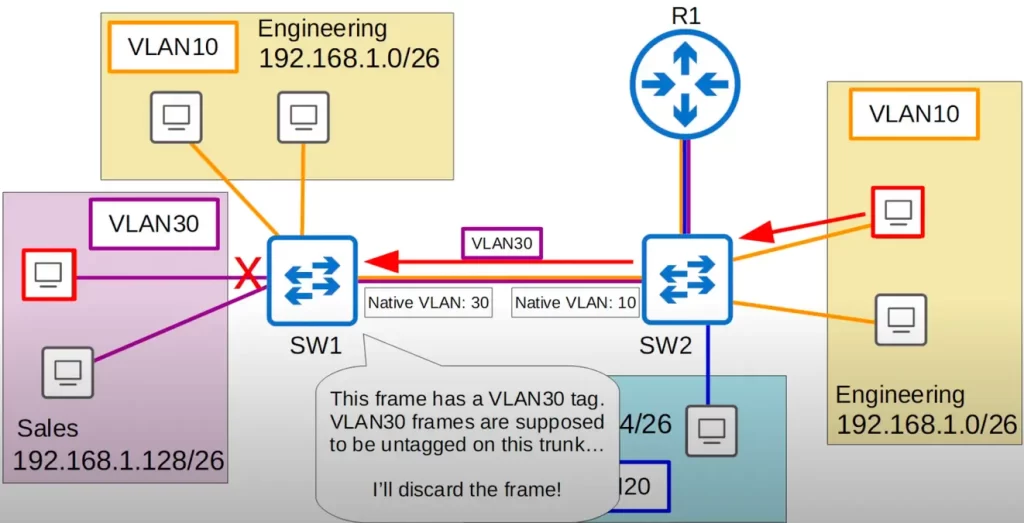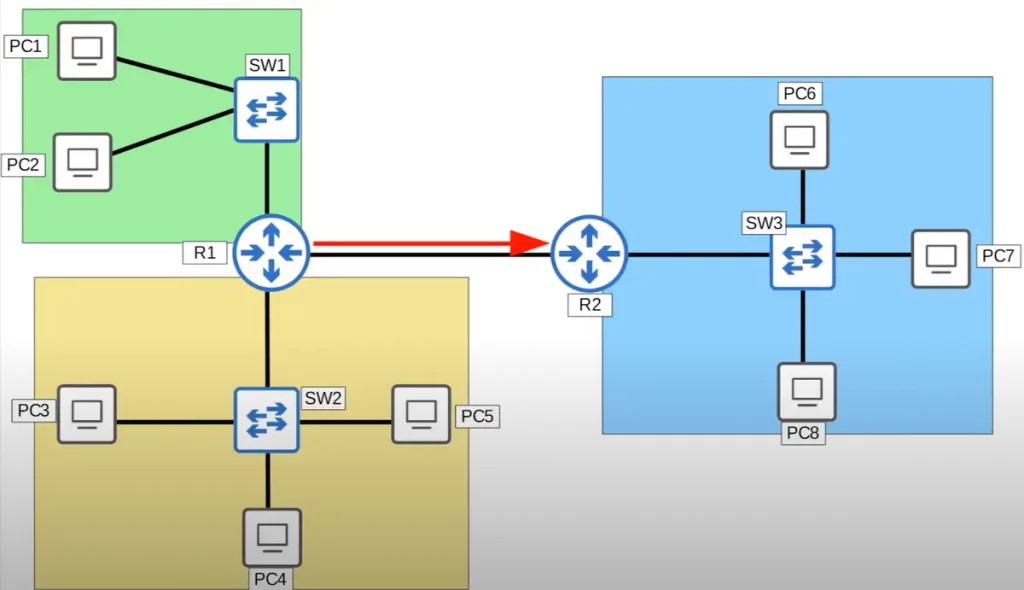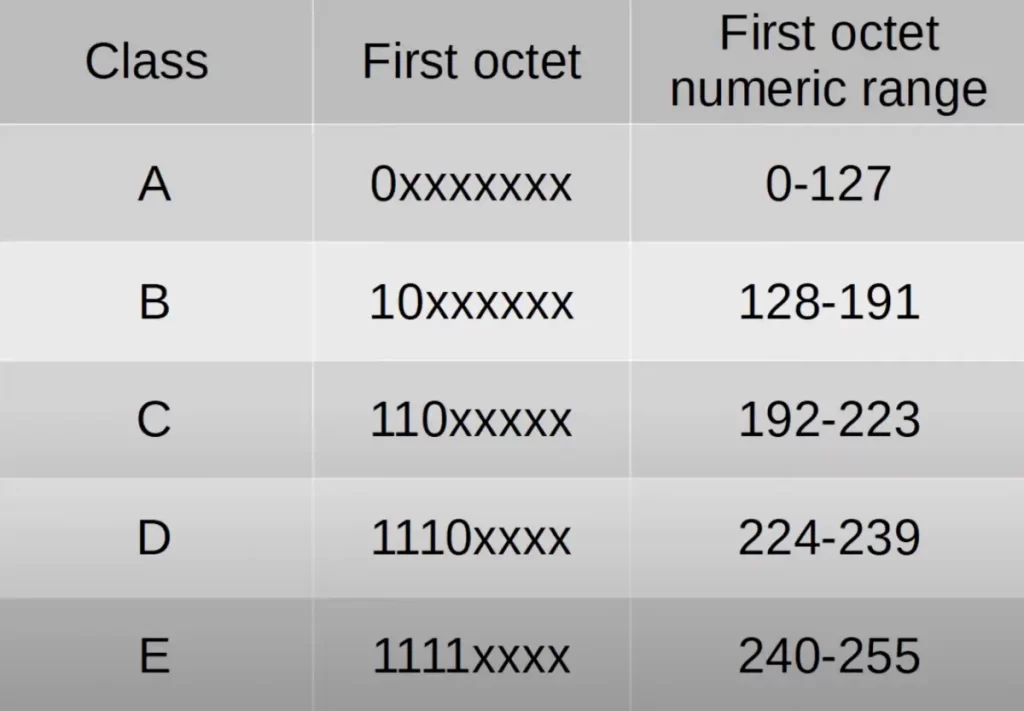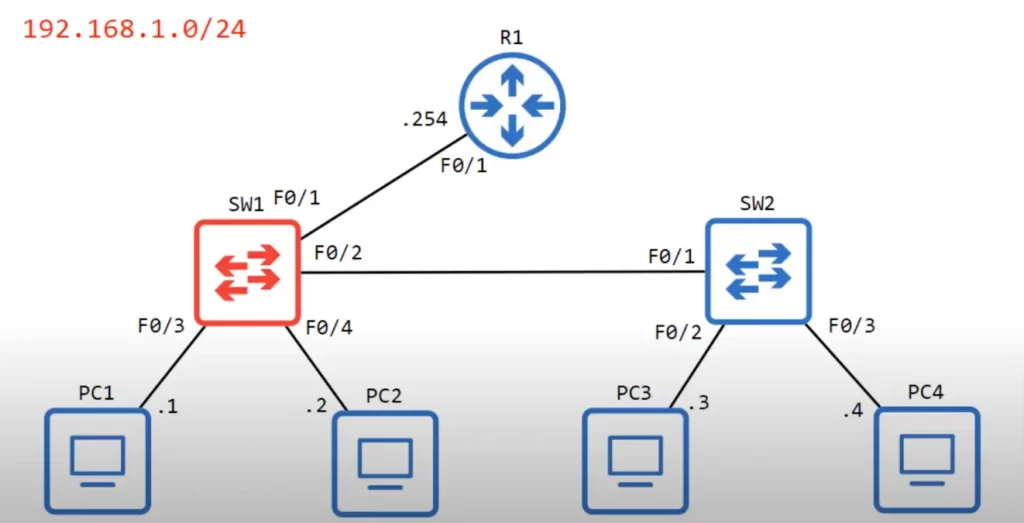Basic operations of Rapid PVST+ STP
This post represents Part 3 of 3 of STP study notes for the CCNA. Because Rapid STP (RSTP) is superior to classic Spanning Tree, it is the default on most devices now. The CCNA exam topics list only mentions Rapid Spanning Tree: subsection 2.5 says you must be able to “Interpret basic operations of Rapid […]
Basic operations of Rapid PVST+ STP Read More »
